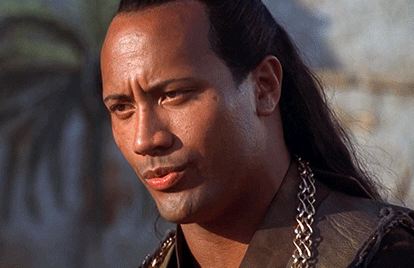Happy Friday. It’s May 20, 2022.
The markets were little-changed week over week and on the day. Bitcoin remained below $30,000, despite mounting an effort to get over it last night. Ethereum also remained below its $2,000 mark.
The only major cryptos up on the week were Binance Coin (+3.7%) and Solana (+1.01%).
Wrapped Bitcoin, an Ethereum asset backed by Bitcoin on the BTC chain moved into the top 10 asset ex-stables, after holding on better than Avalanche and Tron. It is not listed in the leaderboard below.
Speaking of top 10 assets, if we included stablecoins in our rankings, things would look a lot more normal. Three stablecoins have been holding strong in the the top 10, including Tether ($USDT), USD Coin ($USDC), and Binance USD ($BUSD.) We think it’s pretty obvious why that’s the case… (lol)
We’ve got a hefty edition of The Litepaper for you today, so we’ll stop talking. Here’s what to expect below:
💸 Money is running to back the TRON blockchain’s new stablecoin. There might be a Terra-sized problem with it.
📉 A special edition of the TVL Breakdown: What protocols and chains are leading now?
🤷 Lido’s Staked ETH product stETH has drifted off its peg to ETH. It’s nbd, but it’s a sign of the times.
📜 Crypto exchange FTX is going TradFi: Stock trading is rolling out now
The leaderboard stood little-changed today. Here’s the rundown:
| Bitcoin (BTC) |
$29,336
|
-2.88% |
| Ether (ETH) |
$1,971
|
-2.05% |
| Binance Coin (BNB) |
$304.43
|
-0.50% |
| Ripple (XRP) |
$0.4141
|
-0.92% |
| Cardano (ADA) |
$0.5219
|
-1.24% |
| Solana (SOL) |
$50.14
|
-2.79% |
| Dogecoin (DOGE) |
$0.08437
|
-2.42% |
| Polkadot (DOT) |
$9.76
|
-2.04% |
| Avalanche (AVAX) |
$29.25
|
-1.77% |
| Tron (TRX) |
$0.07166
|
-2.74% |
Last month, TRON Founder Justin Sun announced the $USDD stablecoin. It was Sun’s, and perhaps TRON’s answer, to the chain’s long-lasting and endemic reliance on the controversial Tether ($USDT) stablecoin.
$USDD was unlike $USDT in many ways, though: namely, it would use the Tron chain’s crypto ($TRX) to maintain its $1.00 peg. Users would be able to swap for $USDD and then stake it for “risk-free yields” of 30%.
Sound familiar? It’s because that entire pitch is a copy/paste of Terra’s and the TerraUSD stablecoin… and we all know how well that went (lol.)
Amid the failure of Terra, Sun said that he “still believe[s] in algorithmic stablecoin” and insisted that “the failure of LUNA was not because algorithmic stablecoins are not viable.” However, given the fundamentally unsustainable nature of TerraUSD’s own 20% yields (and the subsequent collapse of the whole chain), it’s hard to give Sun’s optimism much weight.
Before the collapse of the TerraUSD, it was known publicly that the stable’s 20% yield on Anchor Protocol was unsustainable: less people were borrowing than were lending on the protocol, and its patently high rates were considered by most to be a “customer acquisition strategy.” In the days leading up to its untimely demise, Anchor actually began lowering rates.
Maybe $USDD will be different. But given the volume of high-profile algorithmic stablecoin failures, Sun is more likely to follow the rule, rather than be some exception. Maybe he even knows it, too: the TRON DAO deployed $2 billion to protect $TRX from suffering a Terra-esque collapse.
And even in spite of the recent meltdowns, scores of institutions and retail degens will pile into TRON’s new stablecoin, even as it plagiarizes the core of an idea which ended in tremendous loss to millions of investors. Maybe some people will be able to turn a healthy 30% APY out of $USDD in its first year, or maybe it will all go to zero.
Either way, there are people willing to put up money to give it a go: there is roughly $347 million $USDD in circulation as of this writing. There was more than $10 billion in the TRON DAO’s reserve according to Sun on May 11.
The collapse of the Terra blockchain was a cultural reset for the blockchain and web3 world…
It was also a financial reset. Not only did Terra fall from the #2 chain ranked by Total Value Locked (to #33), but the rest of the market was thrown around in the fallout.
Total Value Locked (TVL) is a measure of the total amount of value sitting on a chain in various protocols and dapps. TVL is by no means a replacement for market capitalization, which measures the total appraised value of the chain. Nor is it a replacement for any other fundamental metrics. However, it offers fuller insights into the “usefulness” and use of various products (blockchains, protocols, etc.)
As a result, it also offers some clues of where the money is moving.
And moving it is… Ethereum is still sitting high-and-mighty in its first place position by TVL. However, with a massive haircut to its TVL number: only $60 billion is stewing in Ethereum’s protocols and apps. It’s trailed by Binance Smart Chain ($8.51 billion), Avalanche ($4.96 billion), Tron ($4.28 billion), and Solana ($3.11 billion).
In total, the amount of TVL being tracked by DeFi Llama fell to a 2022 low this week: it sat at $98 billion.
The world of dapps has also been rearranged by the Terra tumble. Its ideological competitor, MakerDAO, is now the largest dapp by TVL. MakerDAO issues the $DAI stablecoin, which is backed by dozens of crypto assets. For years, MakerDAO was the crypto world’s largest dapp and DeFi app … so this is an unexpected and ironic surprise. (We covered its sudden resurgence in the bottom story of our May 13 Litepaper, which was about Terra and TerraUSD’s final stand.)
However, not far behind MakerDAO’s $9.54 billion TVL is Curve — and it has a small advantage as a monster-sized DEX. Sure, its TVL has fallen by nearly half in recent days, but not all that long ago it was King of the DeFi apps. We’ll be watching this story.
Behind them was Aave, a lending and borrowing protocol, at $8.27 billion; Hex, a controversial “high-yield Blockchain Certificate of Deposit” product which some people have called a “ponzi” or scam, at $6.47 billion; and Uniswap, the king of all DEXes, at $5.84 billion.
The majority of apps and chains saw their TVL fall on the week and month. However, two stood out:
🪐 Arrakis Finance saw its TVL rise +45.2% this month and +53% week over week. The platform took off on Ethereum earlier this week. Its TVL nearly doubled in one day on DeFi Llama, which could be a reporting error, but it’s more likely that it’s seeing more inflows because of its influence on Uniswap pools.
📈 The Tron blockchain saw a +3% increase in its TVL on the month, which has to do with the launch of its USDD stablecoin (see the story below.)
Days after the crypto market saw its worst contraction since November 2021, the price of another highly-trusted asset fell off its peg.
The price of Lido Staked ETH, or stETH, traded at a considerable discount to the asset that it tracks — Ethereum. Lido Staked ETH is a liquid staking product. It allows users to deposit an asset in exchange for tokens which represent the asset they’ve lent for staking. Lido offers a number of liquid staking products, including ones for Terra, Solana, Kusama, and Polygon.
The liquid part of liquid staking is what makes it so valuable to DeFi natives: users can hold on to stETH while their ETH becomes a productive asset. In Ethereum’s case, depositing ETH sends it to the Ethereum 2.0 chain. Once it’s there, it accrues an interest rate which is kicked back to users in the price of stETH.
If users decide they’d like to sell their stETH, they can do so on DEXes such as Uniswap or 1inch. Alternatively, they could stake their stETH to make passive income. But given recent market moves, people have been opting to do the former — and that has caused variance between the value of stETH and ETH.
stETH traded at a discount of roughly 4.2% according to Lido, which detailed the disparity in a Twitter thread posted on May 13 during the midst of the Terra-caused market mania. As of this writing, stETH was trading at $1,916, which was a ~1.8% discount to Ethereum’s current price.
Small discounts like that don’t amount to much in the grand scheme of things and are, in fact, quite normal in liquid staking products. And although this might seem like a really dramatic occurrence given the collapse of Terra and TerraUSD, stETH diverging from its peg won’t do anything since it’s actually backed by real ETH (even though that real ETH is being staked on Eth2, where it is currently illiquid.)
Instead, stETH’s decoupling from the price of base ETH can be boiled down to one phrase: liquidity matters. Since many people wanted out of stETH (because it tracks the price of ETH), the value of stETH was distorted from where it should be. Lido responded to this issue by deploying “an additional [liquidity pool] … to imporve the liquidity around the stETH:ETH peg.”
Ultimately, stETH holders won’t lose as long as they don’t sell their stETH in these trying times for the market. But it just goes to show traders that in times of market volatility, even trusted assets can become a little wobbly.
Crypto
FTX Opens Up Stock Trading
In less crypto-y related crypto-news: the crypto exchange FTX is going TradFi: the company is launching a feature to allow users to trade stocks and ETFs alongside crypto.
The company’s brokerage service will expand to the vast majority of its U.S. customers in the next few months, adding another player to an industry rife with “no commission” trading platforms.
However, unlike incumbents in the space like Robinhood and WeBull, FTX will actually for forego routing orders to order makers. By doing so, FTX will do away with the controversial practice of “Payment for Order Flow.”
Broker-dealer Public.com did away with Payment for Order Flow during the GameStop short squeeze last January, opting to deliver orders directly to the exchange. However, discontinuing PFOF has reportedly had a massive downside effect on the company’s revenue.
For FTX, that doesn’t seem to be a concern: it’s already a goliath in crypto trading across spot, futures, and options markets. It doesn’t care about “see[ing] a profit on day one,” according to FTX.US President Brett Harrison. He added that FTX eventually wants “to offer … an everything app for financial services.”
The addition of equities trading follows a monster purchase of stock in Robinhood by FTX CEO Sam Bankman-Fried, who acquired 7.6% of the company. He claims that he intends to be a passive investor.


